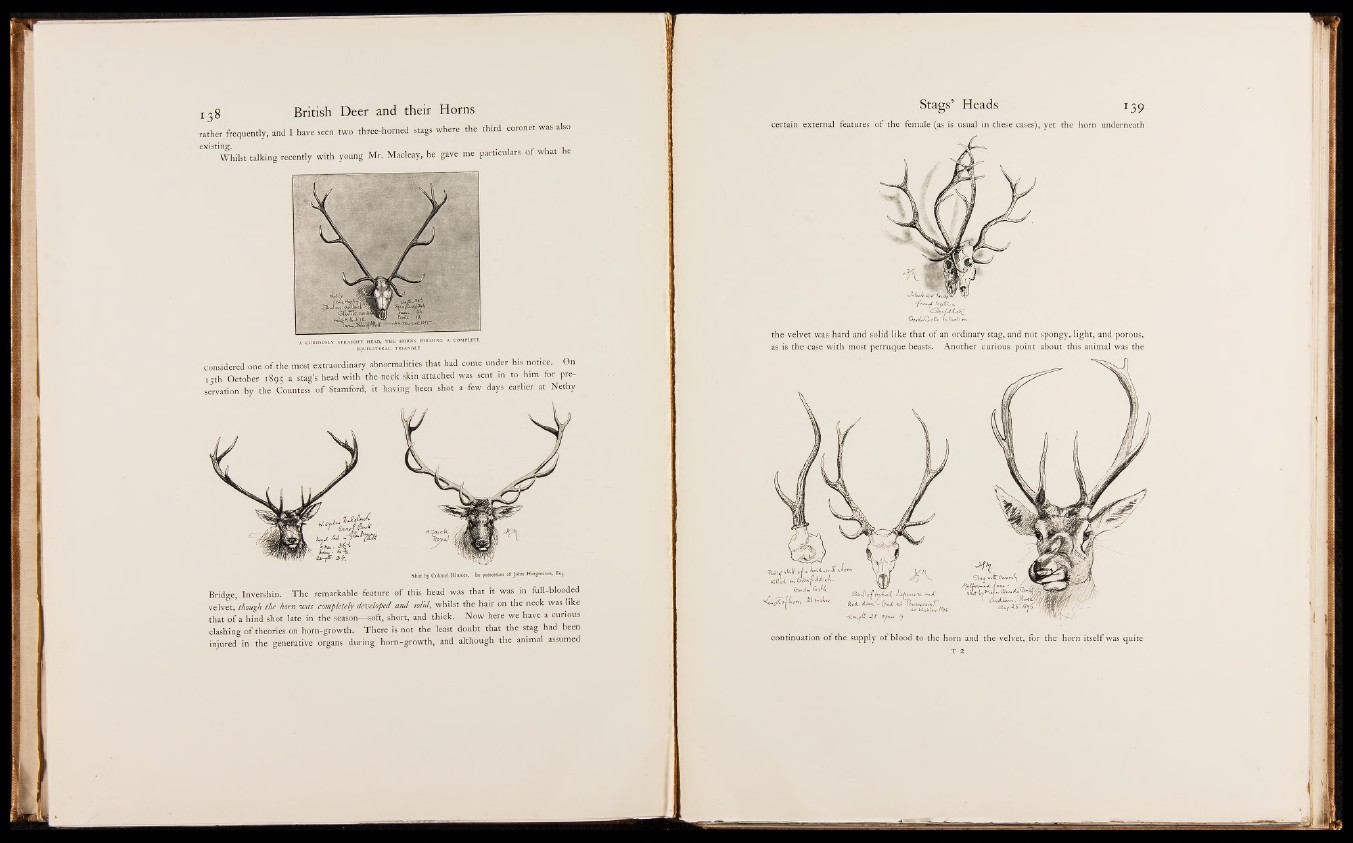
rather frequently, and I have seen two three-horned stags where the third coronet was also
existing. c ,
Whilst talking recently with young Mr. Macleay, he gave me particulars o w a e
considered one o f the most extraordinary abnormalities that had come under his notice. On
15th October 1895 a stag’s head with the neck skin attached was sent in to him for preservation
by the Countess o f Stamford, it having been shot a few days earlier at Nethy
Bridge, Invershin. The remarkable feature o f this head was that it was in full-blooded
velvet, though the horn was completely developed and solid, whilst the hair on the neck was like
that o f a hind shot late in the season— soft, short, and thick. Now here we have a curious
clashing o f theories on horn-growth. There is not the least doubt that the stag had been
injured in the generative organs during horn-growth, and although the animal assumed
Stags’ Heads 139
certain external features o f the female (as is usual in these cases), yet the horn underneath
/ ’c3 L,U J;d (
the velvet was hard and solid like that o f an ordinary stag, and not spongy, light, and porous,
as is the case with most perruque beasts. Another curious point about this animal was the
continuation o f the supply o f blood to the horn and the velvet, for the horn itself was quite